Diving Into Pretty Simple Jellyfish World
Jellyfish, with their mesmerizing pulsating bells and trailing tentacles, have captivated us for centuries. But these graceful drifters are more than just beautiful beach finds. They’re ancient, complex creatures with a surprising array of adaptations.
In this blog post, we’ll uncover some interesting information about Jellyfish and to top it off, we’ll unveil some fun facts about these remarkable creatures that will leave you feeling more than a little jellied (in a good way, of course!). So, buckle up and prepare to be amazed by the underwater wonders of jellyfish now.
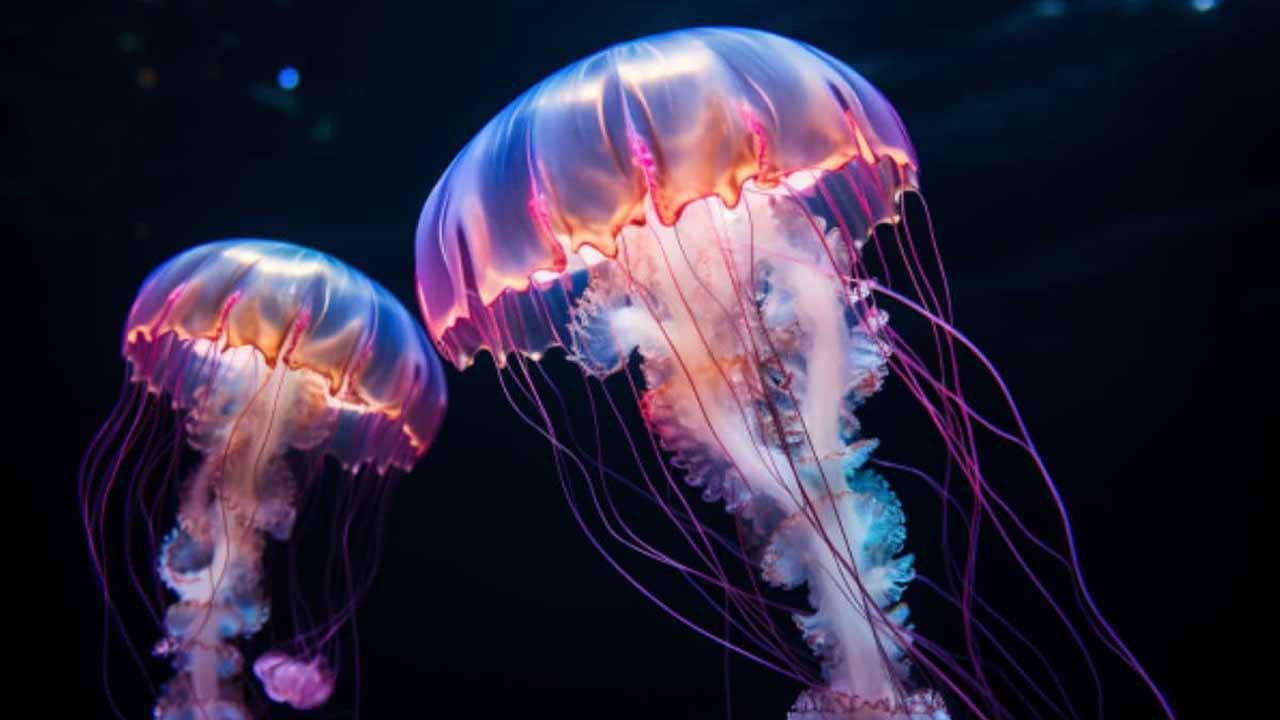
Types of Jellyfish
1. Origin and Evolution
Jellyfish, the most amazing undersea creatures of the earth, are available in many types having their own special features and living places. Jellyfish have been present on the surface of the Earth for millions of years and hence have been evolving into a wide variety of species. They are believed to have been generated in the ancient seas and evolved to adapt to different environments over time.
2. Types of Jellyfish
The jellyfish kind comes in a large variety. Some are like the jellyfish that are transparent and tiny, while others can be like the colorful, large ones. The different species among these include the Moon Jellyfish, Box Jellyfish, and the Lion’s mane, with each one having a unique design.
Moon Jellyfish
| Among the different types of jellyfish, moon jellyfish (Aurelia aurita) are widely distributed in the oceans around the world. They have a delicate bell-shaped body with short and uncoiled tentacles and four oral suckers or arms. Moon jellies are mostly seen in the coastal water and are famous for their rhythmic gliding motions as they move around. | 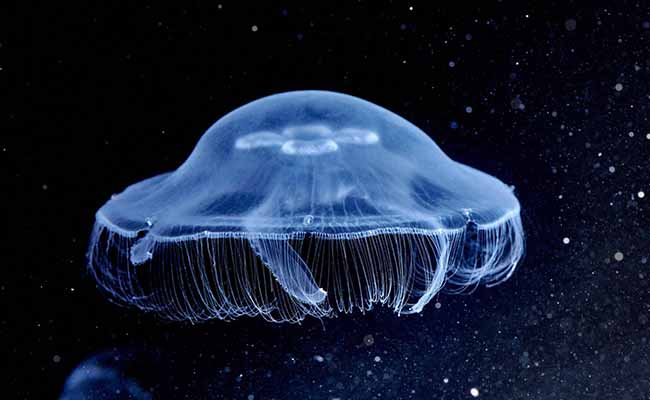 |
Box Jellyfish
| The Box Jellyfish, whose scientific name is Chironex fleckeri, also known as fateful jellyfish, is one of the most venomous types of jellyfish in the globe. They secrete toxic substances in the long threads of their bell-shaped bodies. There is little doubt that these can be fatal to humans. Box jellyfish are mainly found in the Pacific and Indian Ocean and are famous among humans for their strong stigmatization that can be fatal. | 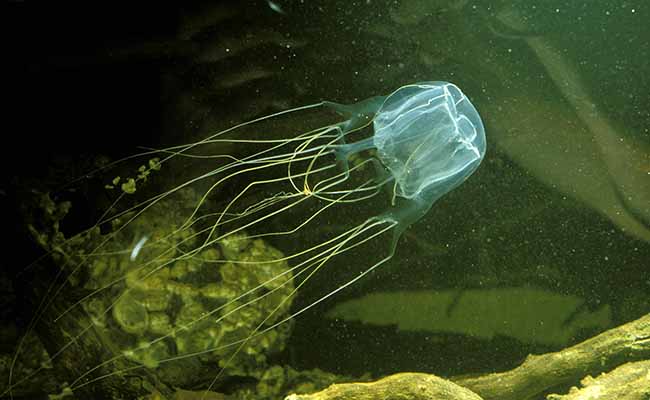 |
Lion’s Mane
| The Cyanea capillata, which is also known as the Lion’s Mane Jellyfish, is one of the biggest jellyfish present in this world. They have a bell-shaped body with narrow, dangling pennants reflecting a lion’s mane. Lion’s Mane Jellies are often noticed in waters in colder regions, which makes them known as one of the largest jellyfish species that can reach seven feet in diameter. They are recognized for their beautiful colors and strong sting, which results in annoyance or mild pain in humans. | 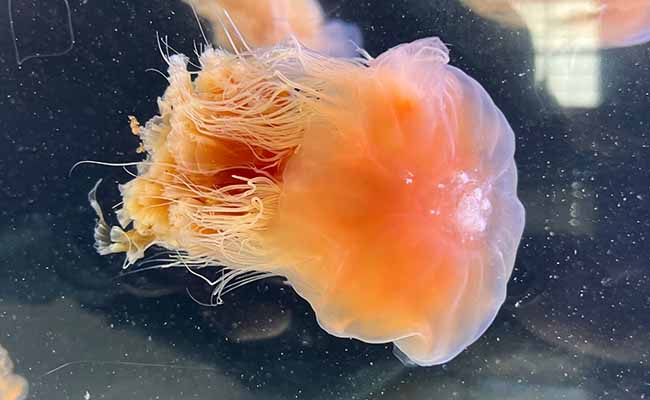 |
Turritopsis Dohrnii
| There is a tiny creature called Turritopsis dohrnii which lives in the oceans and is known as the immortal jellyfish. With its diameter barely reaching a few millimeters, this jellyfish is equipped with a surprising feature. Unlike the majority of jellyfish which die after reproduction, the Turritopsis dohrnii can deceive death! Moreover, it can restore its health by reverting to the polyp phase, becoming effectively young once again if injured or stressed. | 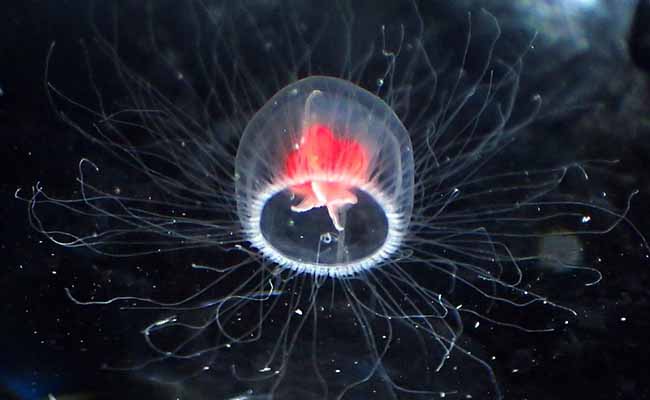 |
3. Characteristics
Jellyfish are famous for their gelatinous bodies and their tentacled hydromedusae, which have specialized cells called nematocysts, which they use for feeding. They don’t have a brain or a central nervous system, rather they have a nerve net that enables them to get some amount of light and movement perception.
4. Habitat
Jellyfish occupy seas and oceans all over the world, from near-shore waters to the deepest parts of the ocean. Many of these creatures usually accept rides from oceanic currents, but some species are capable of moving by contracting their bell-shaped bodies.
5. Diet and Predators
The jellyfish consume small fishes, plankton, and unsuspecting organisms they trap with their tentacles. This means that they are not safe from other sea creatures such as turtles, fish, and bird types. The jellyfish may seem small and flimsy, but they are a valuable component in the marine life world.
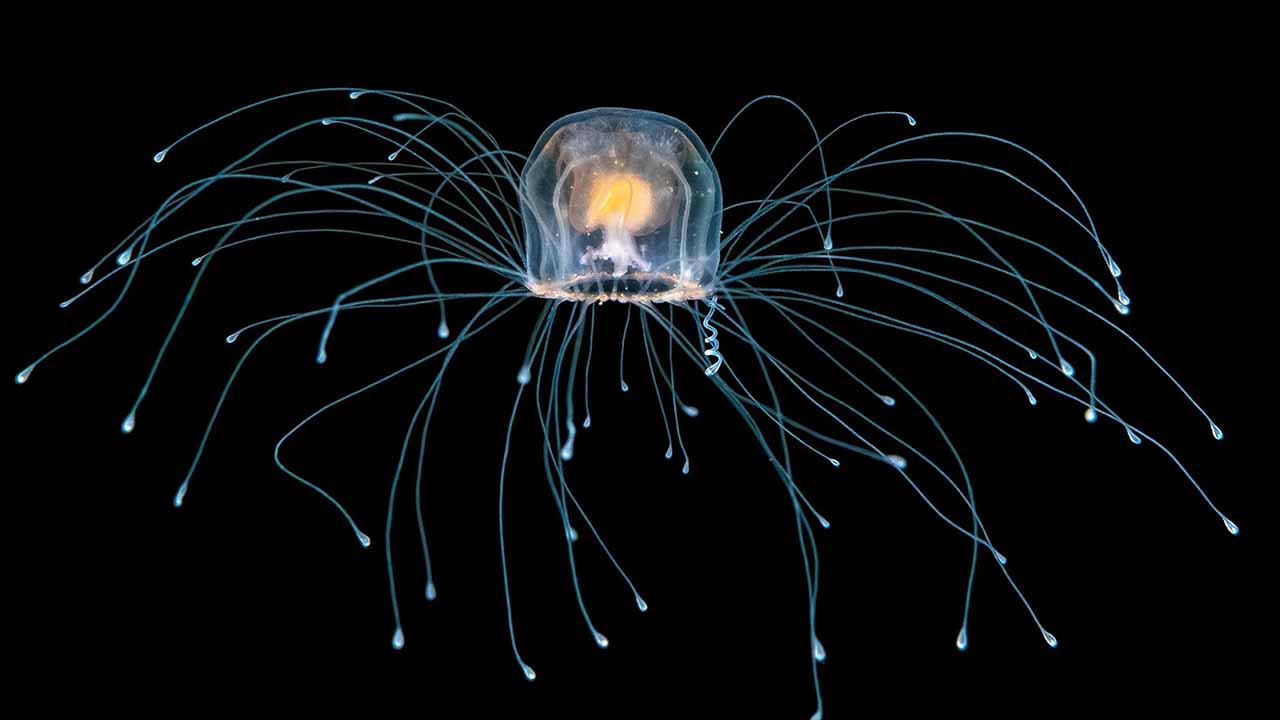
What Do Jellyfish Eat?
Jellyfish are in the carnivore category, so they just eat other animals. Their food is dominated by small fish, plankton, shrimp, and other irritating microscopic sea creatures. Some larger species of jellyfish are known to feed on small fish and even other jellyfish. It’s important to note that jellyfish are opportunistic feeders and will eat whatever food source is available to them in their environment.
How Do Jellyfish Find Their Food?
Jellyfish get food by floating in the ocean currents with the help of their tentacles, which they use to grab prey as it passes by. Some jellyfish species are equipped with long, stingers, which contain venom that paralyzes their prey before eating it. Some have supplemental arms that they use to ward off the food to the mouth.
Feeding Process
Jellyfish will utilize their tentacles or oral arms to bring the prey from their oral cavity. Similarly to humans who have a centralized digestive system, jellyfish do not have a stomach and intestines, but their gastrovascular cavity acts as both their stomach and intestines. Those enzymes in the jellyfish’s oral cavity break down the food. Then, the body absorbs the nutrients.
Do jellyfish have brains?
Jellyfish do not have a brain. They do not have a central nervous system like other animals. Instead, jellyfish are equipped with a nerve net that is spread throughout their bodies. This nerve net allows them to respond to the environment, but they are not able to think or learn as a brain animal can.
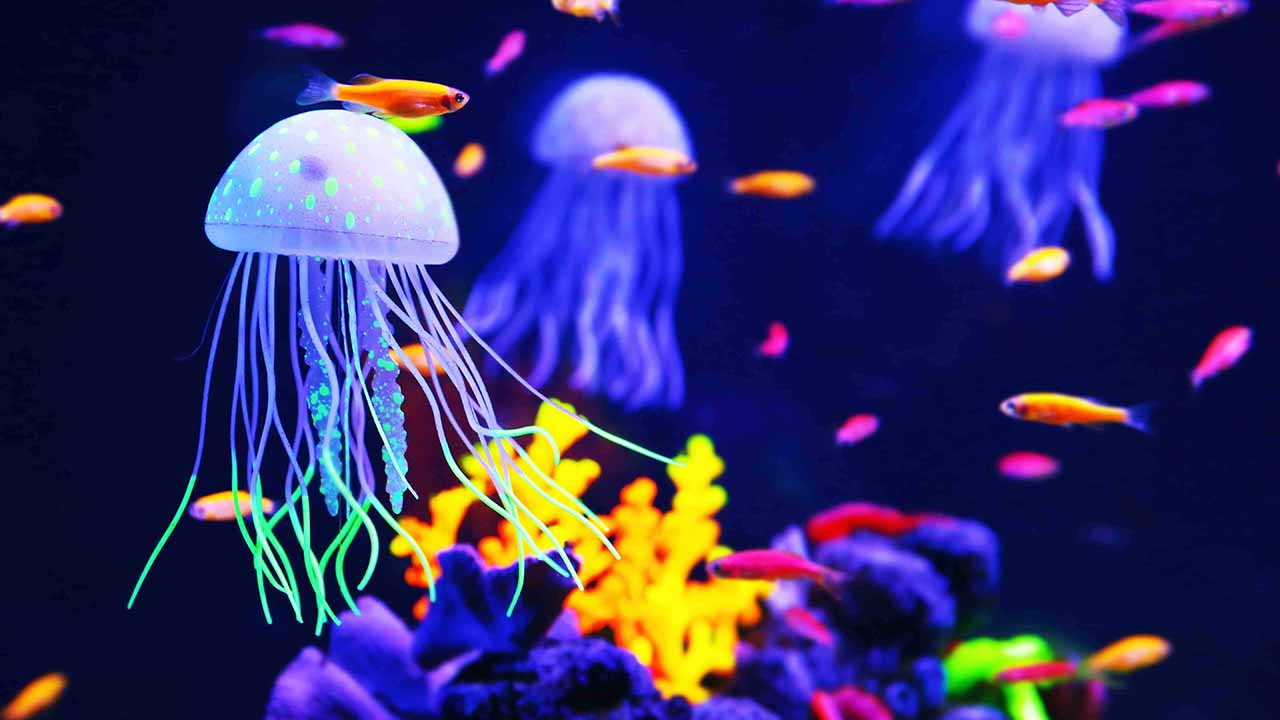
More Fun Facts About Jellyfish
1. Ancient Mariners
Jellyfish are living fossils! They’ve been around for over 600 million years, even predating the dinosaurs. That’s older than trees and even fungi!
2. Mostly Water
Just like their name suggests, jellyfish are mostly water! Their bodies are made up of around 95-98% water. This makes them super lightweight and helps them drift with the currents.
3. Glowing Giants and Tiny Terrors
Jellyfish come in all shapes and sizes. The lion’s mane jellyfish has tentacles that can stretch up to 120 feet long, while the Irukandji jellyfish, barely an inch across, packs a powerful sting! Some jellyfish even light up the ocean with bioluminescence!
4. Immortal Jellyfish
Believe it or not, one species of jellyfish, the Turritopsis dohrnii, might be biologically immortal. These tiny jellyfish can revert to an earlier stage of their life cycle if they get injured or stressed, essentially becoming young again!
5. Stinging Surprise
Most jellyfish have stinging cells on their tentacles called nematocysts. These cells contain tiny harpoons that inject venom when triggered, which can be painful for humans., However, the sting of most jellyfish is not deadly.



